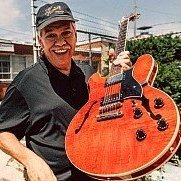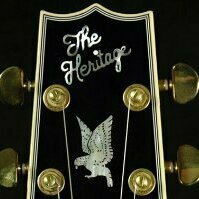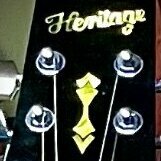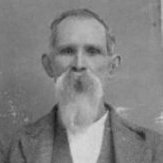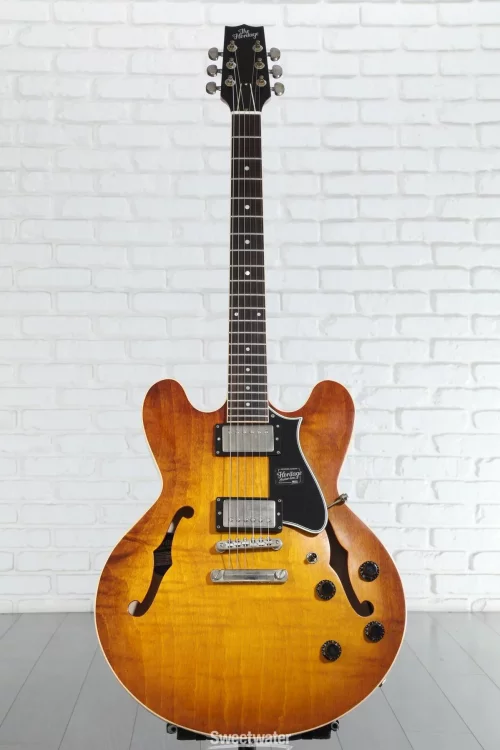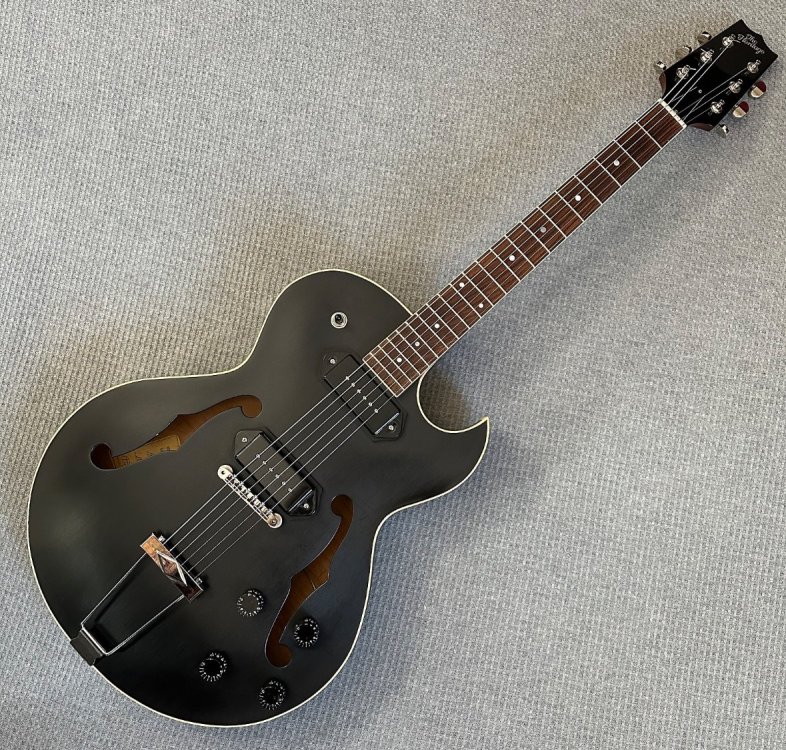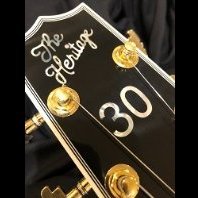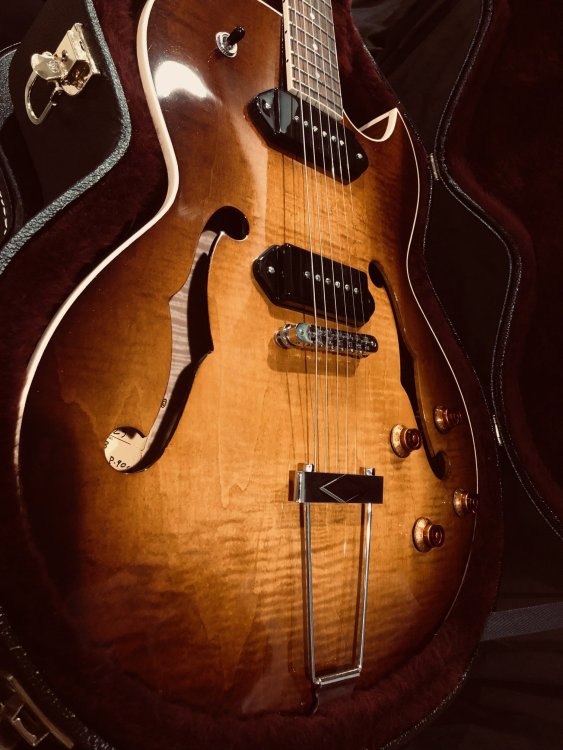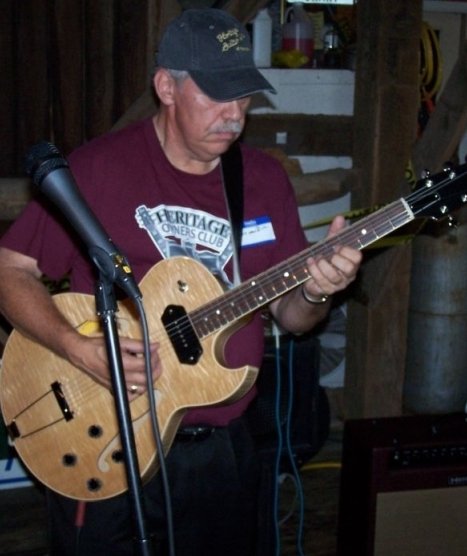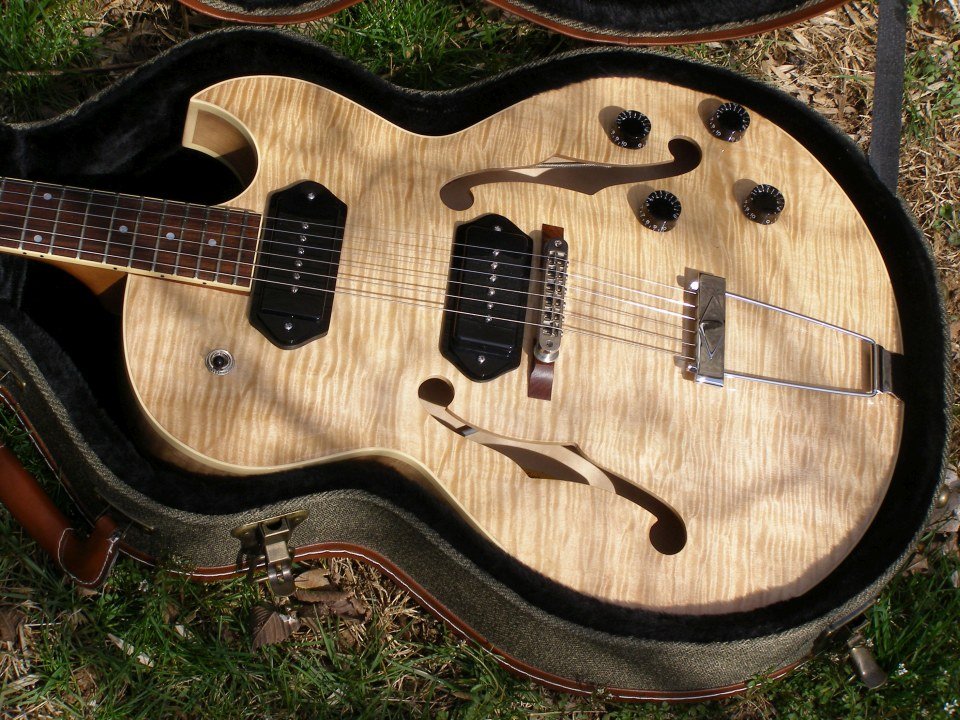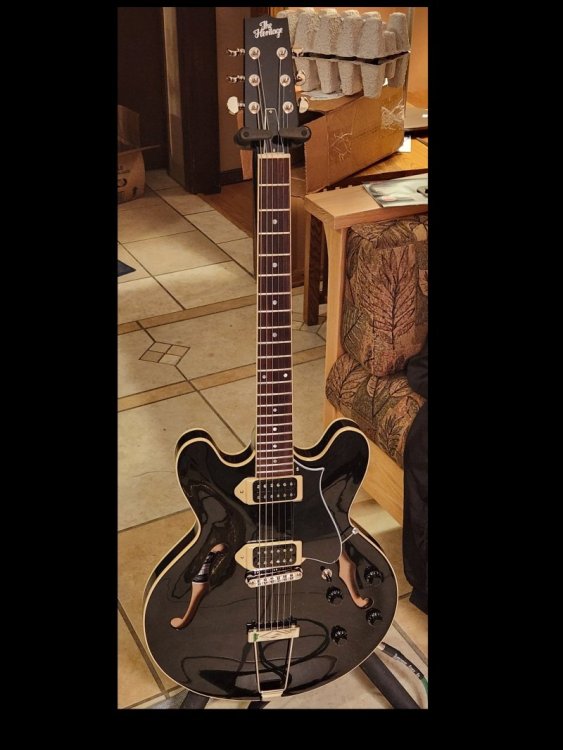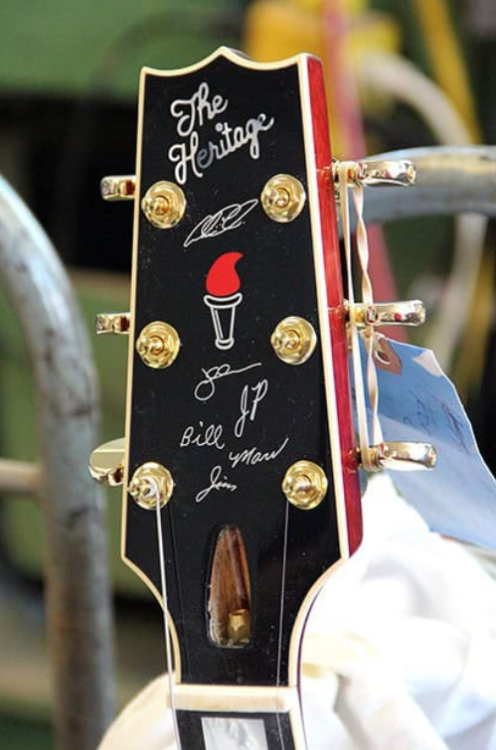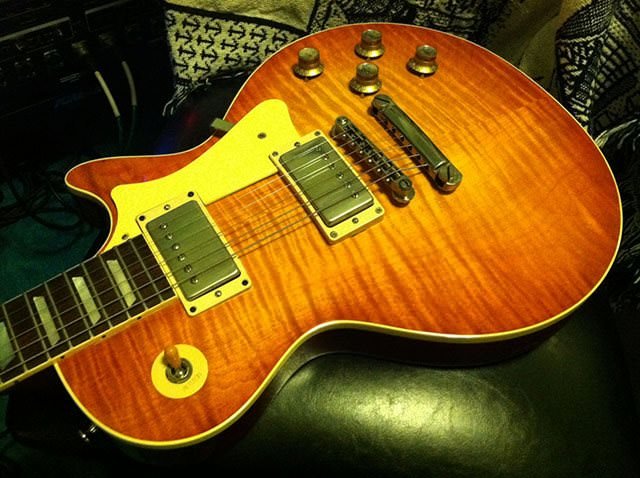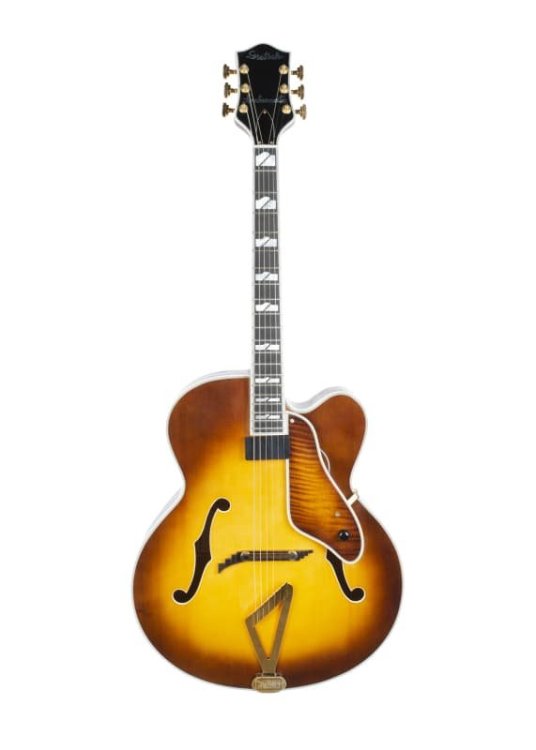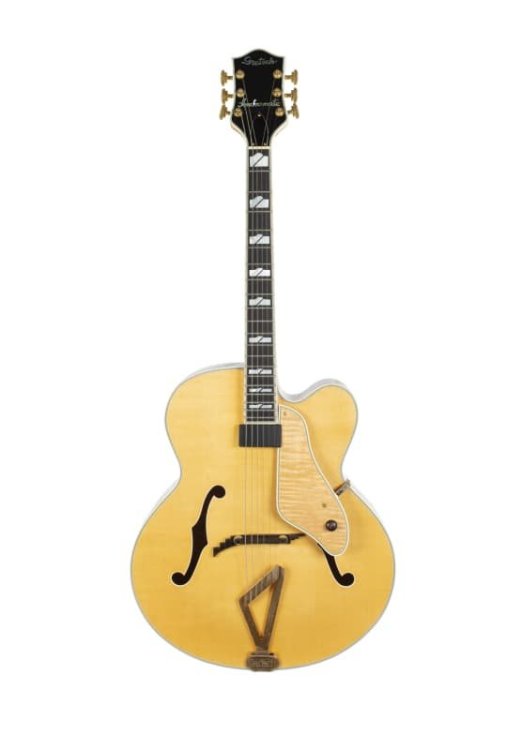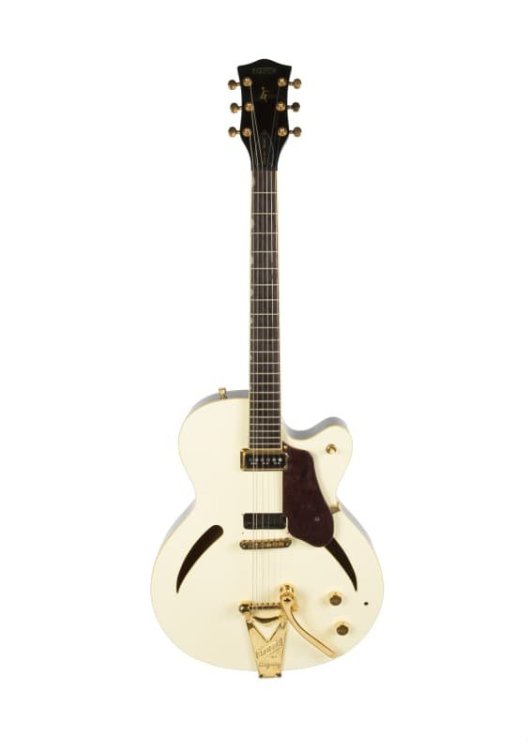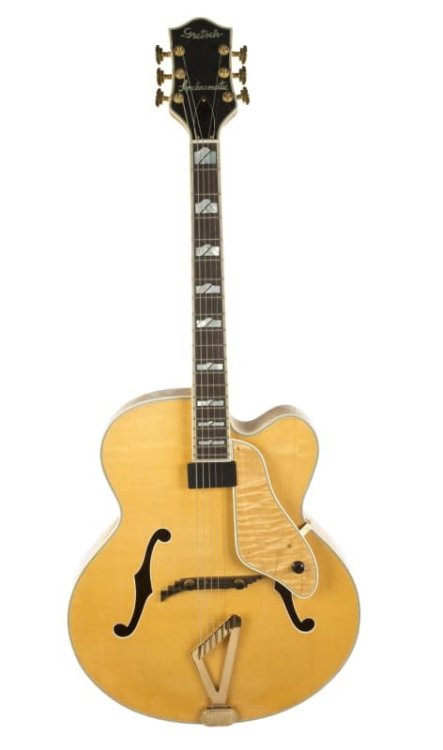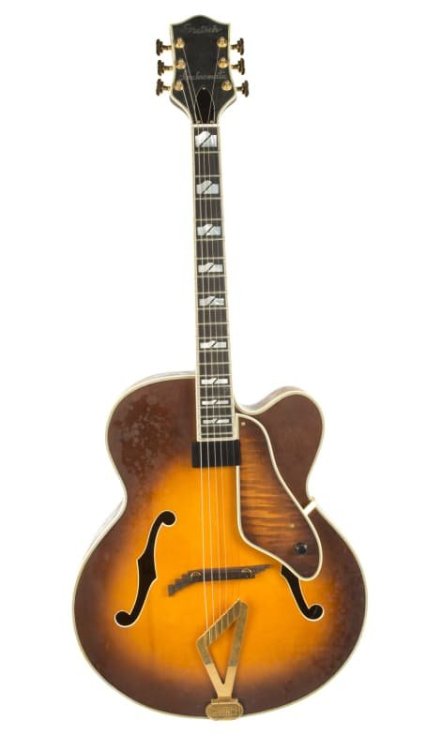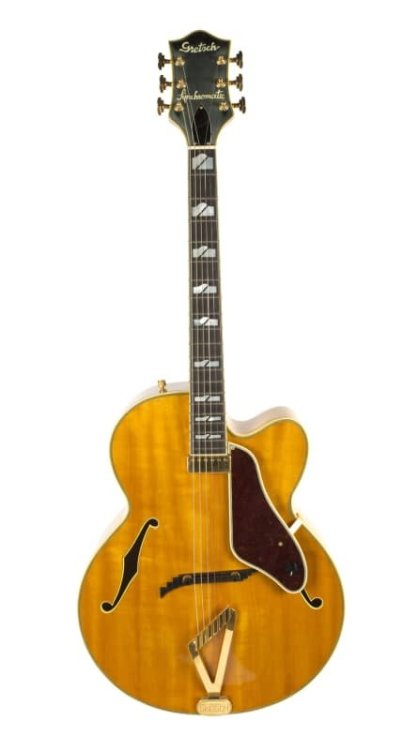Leaderboard
Popular Content
Showing content with the highest reputation since 11/23/25 in Posts
-
5 points
-
5 points
-
Yesterday’s Happy Friday Post from George Metropoulos on Facebook: Happy Friday! The last Friday before Christmas. So, get out there and get your shopping done this weekend. Today I'm here to make a major announcement. After months of deep soul-searching, I've decided to step away from the amp business. There are many varied reasons for this and I'm sure it's the right decision. With this announcement made, here are some points: The whys. Health. This blood pressure is kicking my ass and surely indicates a serious health issue. I need to focus on being more healthy. One way to do that is to eliminate stress. Running a small business is nothing if not stressful. For nearly 25 years now I have given 100% day in day out. I've joked that I sold my soul to the amp industry and everyday it comes to collect. Keeping this business running requires me to overachieve at all times. It demands far, far more than I have the stamina to give these days. When I can't give 100% I can't provide the Metropoulos experience I want each of our customers to have. That wears on me. Metropoulos demands and deserves a tireless force of nature at the helm. The market / industry. Slow sales, part shortages, tariffs. These things affect us everyday. We need to sell about 10 amps per month to cover our payroll and overhead. Since Labor Day, we've taken 5 amp orders. That's unsustainable. I can't promise our crew there is work to do and paychecks coming on Fridays when we don't sell amps. It's not just our little amp company feeling this pinch, the entire industry is down right now. Every week another guitar or amp manufacturer is closing their doors. Demand. I've parsed my observations down to a few sentiments: first, we're building steam engines. The World doesn't really need any more of them. Second, everyone who wants a vintage Marshall, likely has 3 or more already. Anyone who wants a high end tube amp, likely has several of those, as well. Those players are likely plugging into a modeler or digital emulation more often than their beloved tube amps. It's the trend, the technology is exciting, the tone isn't as far off as it used to be and the convenience supersedes the tonal benefits of big, heavy, loud, expensive tube amps. I get it and I don't begrudge anyone! Finances. Not to disclose my finances, but suffice to say I'm not making any money in this business. I've lived like a starving artist, made many sacrifices, poured every dollar made back into the business and operated with zero financial safety net for two and a half decades. I have no savings, no retirement, no health insurance. I followed my passion and have no regrets for that. But, I have to make some money and have access to health treatment. It's time. Mission accomplished. This goes to the literal heart of the matter and sheds light on my character. I'm obsessive and relentless. I started with a self-imposed mandate to separate cranked plexi tone from sheer volume. I obsessed over vintage amps, documented everything I could measure trying to "crack the code" and learn why they sound the way they do. Eventually, the Audio Precision came into my life and I began archiving DNA samples of every old amp that crossed my bench. Armed with this genetic data, I started over from scratch and after several months emerged with the Metro-Plex MK II. At last, authentic plexi tone at any volume. I fulfilled the mandate. The engineering challenge was complete. I believe the Metro-Plex MK II is the best amp of it's kind. Not being boastful or arrogant. Just knowing that I didn't stop until it satisfied my obsessive expectations AND held it's own against the best of the best reference amps I strived to emulate. Here in my 50's I'm at the end of a journey that started as a teenager taking everything apart to see it works. Then taking electronics classes and opening a repair shop. Later, as a professional guitar player, building my own gear and torture testing it on the road. Finally, in the amp business, setting out to create what is now the MK II. Mission accomplished! After decades of pursuit, I'm done. I finished it. I need a new challenge. The How and When. We have less than ten 100 watt amps left to build to fill our orders. All 50 watts are built and the last few have burned in and will ship soon. Over the next 6 weeks we should have filled our amp obligations. Most of the parts bins are nearly empty now. We've been buying only the quantity of things we need to fill the orders. There are some chassis left, but no extra transformers or tubes. If there are parts for a few extra 100 watts, we may build those. But, I'm not going to order 25 expensive pc boards just to build a few amps. Effectively, when the parts are gone, that's it. I'm not interested in building a few amps per month in my basement as a hobby. I've built 100's (possibly 1,000) of amps over my career, I've scratched that itch. Speaker cabinets. Despite our best intentions, we just can not reliably deliver the 2-12 slant cabs that you have placed down-payments for. I've been holding out for this to not be true, hoping I might somehow to will it to be. But, I have to concede. The mandatory elements are just not in place. The money for parts and speakers, the shipping cartons, the payroll and the time needed do not exist. I believe we have 13 down payments for these cabs. I'll begin refunding those weekly until everyone has their funds back. I can not express how sorry I am and how defeating it is to fail on this. I hope that you will accept my apology and I beg your forgiveness. Regarding cabs, all is not lost! Despite my journey coming to an end, Chuck's is ramping up. Our in-house cab artisan will be open for cab business. I'm providing all of my CAD files, old cab data, hardware documentation, parts resources and the tools for Chuck to hit the ground running. I won't speak for Chuck, but I suspect his first product will be a 2-12 slant cab. I'm giving all of my love, support and full endorsement. FX loops. The inventor or the Zero Loss FX loop, Steve Miller will be taking it back and keeping it available. Our omnipotent guru is the obvious and only choice to carry on the legacy of his design. His circuit has found it's way into countless amps. It's OEM in many brands every guitar player knows. It's been copied, knocked off, stolen. Yet, remains ubiquitous. I'll post updates as he gets a website up and running. The Future. What's next for me? Everyone keeps telling me I'll be back. I'll miss designing and manufacturing amps. I don't think so. What else do I have to prove? I've designed and manufactured for my own Metropoulos brand, as well as companies you know well. What I do not aspire to do anytime soon is run a business. I'm exhausted. The administrative workload is relentless and never ending. Eternal crisis and problems to solve. A big commercial building to maintain. Machines that break down. The list of tasks that only I handle for Metropoulos is huge. Most days are triage in the shop. At times, when I have spent time away from the shop....those mission critical tasks are all waiting for me upon my return. What I look forward to moving forward, is to be creative again. Whether playing guitar, recording and mixing music, cooking, writing or just bugging Cris and doing silly stuff to make her laugh. That's where I feel I'm leading with my best traits. It's time to rejuvenate. To prioritize my health. Lower my blood pressure. Cleanse that anxiety induced Cortisol from my system. Gratitude. I want to sincerely thank everyone who has been a part of this journey. Your friendship, support, patronage and enthusiasm for Metropoulos has provided me the opportunity to chase this dream and indulge these passions. I'm eternally grateful. I still recall the names of my first two customers who bought turret board kits from me back in 2003. Chris L and Stan M. Thanks for giving me a chance to get started. I've developed true friendships with some really outstanding people that I'd never had met without the amp biz. You can't place a price on that. In my heart, I'm ready to move on to my next challenge. My next creative adventure. Something I can give my 100% to emphatically. Something that drives me to be the best version of me that I am capable of being. With that, I bid you this single parting wisdom: PLAY LOUD!4 points
-
I've heard some of George's amps at PSP. They did sound very good. But I can see how running a business like that can be rough. From Metropoulous to G&L and Hofner. The music busines can be saturated, which makes it tough to continue. It's becoming more common for small to midsized businesses to close up, especially when the owner begins to run into health issues. The amp that I have brought to PSP for quite a few years is a hand built '65 Princeton circuit made by a fellow in Asheville NC, John Schuske. He did repairs and built amps based on classic Fender and Marshall designs for quite a few years. He passed away in August of this year. His partner of 10 years is taking over the business for now. Some years back, I brought my Melancon T to PSP, built by Gerard Melancon in his one person shop in Louisiana. He passed away from cancer back in 2019 at 58! The business died with him. I hope George gets his health under control, and wish him well in his next phase, whatever it might be.4 points
-
I've never been much for chasing the latest hotness in amps. I mean, I still think my (now ancient, but revolutionary <heh> at the time) first-gen Peavey TransTube can sound pretty good. The most 'exotic' amp I own is the Fender I snagged from @LK155 which came complete with the @yoslate funk. Until two weeks ago, I hadn't actually pulled a guitar out of a case in nearly six years. When I did, I DI'd it in to my audio interface and ran it through whatever NI's pseudo-amp thingy is (GuitarRig? Something like that). Amps just don't...move me. All that being said, it bums me out when a small- to mid-sized business folds up. Especially one more-or-less local. Even more especially when there are health challenges. But, being as none of us ever get any younger, I suppose that's just the way life goes. Good on him for realizing health is more important than many realize. Without health, what do you have, right? The thing that really stands out for me--and I'm not and have never been a customer, obviously--is the transparency. I can't count how many threads I've followed over the years where a small luthier, amp house, pedal guy, that dude making analog tape delays somewhere in the Midwest, etc. has taken customers' money and disappeared with nary another word. Dude just lays it out there, and I think that's respectable. Don't know George Metropoulos, but I wish him the best of health and a more-than-decent shot at happiness.4 points
-
I found this on Reefeeverb. The Heritage H525 is a full hollow thin line guitar with a Florentine cutaway. Maple Laminate top and back with a solid maple rim. Mahogany neck with a rosewood fretboard. 2 Lollar dog ear P90s. The H525 is loosely based off of the vintage Gibson ES125. These H525s RARELY come up for sale. But this one was dramatically different. The body was finished in a matte black. Originally is was a VSB (vintage sunburst) kind of a light tangerine burst. The H525s had a cult following among Heritage enthusiasts. But not many were ever made. When I first saw it, I wasn’t a fan of the refin. But after stalking the ad for a couple of days, I decided to pull the trigger. I figured, worst case scenario, I could always get the top refinished at some point if I don’t like it. But it’s actually pretty cool. The seller also upgraded the bridge to a Faber ABR1. I believe everything else is stock. He currently has it setup for 11s. I will be putting 9s on it, so there will be some extensive setup work to be done. I had one of these 525s many years ago and they are such a joy to play. Lightweight and full of warm creamy goodness!!! This is a pic from the seller. I will have pics and a full report after setup.4 points
-
Character. Honesty. Self-awareness. Forthrightness. Not a lot of these qualities abounding just now. Read every word of his well-written letter. Can wish George only the best, particularly in getting on top of his health!3 points
-
Thankfully I don't have any volume problems with my neighbors, but when I do play out, I usually play one of these two 100-watters. For the type of bands that I play with (mostly blues, funk, fusion), it's easy enough to keep the volume in check with the rest of the guys. That isn't to say that I don't love smaller amps, though, for I do own a few.3 points
-
I got three of them. One of those I gave to my grandson. Gretsch and Randy had a charity auction years ago. A friend of mine tipped me off to the event. He got one. I put bids on 3 and got them all. They are essentially acoustic Super Eagles with floating pups. Together we got the first 4 Synchromatics. I kept two blondes and had a single coil pickup put into a Heritage floating casing made by one of the Heritage guys.3 points
-
Apologies if this has previously been posted previously. Nice guitar. Nice playing. Topical and Seasonal. https://www.youtube.com/watch?v=CH8gwla9THg3 points
-
3 points
-
3 points
-
referencing this thread: https://www.heritageownersclub.com/forums/topic/38369-used-530-incoming-inspired-by-trich/ finally got the wolftone dr. vintage humbuckers disguised as P-90s installed in the subject guitar . . . i chose the cream color pickup surrounds and glad that i did . . . tone is a little less "focused" than a 535 but certainly soft and round . . . scratched the itch! thanks for looking!3 points
-
that's a drag to hear & read about, but he's 100% right. Lots of wisdom in that post. Metropoulos amps are a hell of a legacy: those amps will be running & played for years by people who appreciate them. I wish George all the best in the future stress-free life he creates for himself!2 points
-
AE definitely means that it's a 2014 not a 2006. In 06 they were stamping the serial number and they started with W ( have a 2006. On mine, the W is above the number. I think they had to get a new stamp as the old one was wearing out). They didn't start hand writing numbers until later. It's hard to say what the '06 designates, and don't know they'll have any special info regarding it's specs. Sometimes Ren or Jim would remember special orders, but if you built a few thousand guitars over 25 years, you wouldn't remember every one. I don't know that they kept a computer database, although by 2015 they may have well converted. If I remember the first two numbers are the days working backwards from Dec 31, and the last two is the number of the guitar issued that day. That would make it the second guitar of Monday Oct 27th 2014. The Seth Lovers could easily been owner changed, or factory installed. It's also possible that the paper label either wasn't installed or came loose. Still, they are of a close date to the guitar serial. I don't think it would be worth the time to pull the pots just to look at date codes.2 points
-
All the original P90 Heritages that I'm aware of have Jason Lollar pickups. Unless it was a custom order, or the pickups were changed, those would likely be the stock ones. The control cover may even say the pickups. Check there.2 points
-
How many of the folks in the video have we met? Ren, Pete, Curly, Marv, Arnie, Bill. There are several that I've seen through the years but didn't get names. The rack from the prototype room should have been donated to the Kalamazoo Valley Museum. Here's an article I ran across a while back. I never saw the "passing of the torch" headstock before. https://the-guitar.com/a-heritage-of-guitar-making/2 points
-
2 points
-
I think I'd have this in his hands right away. The rattle can black really wrecks the vibe for me. A nice gloss black would be attractive, but I've always been a fan of finishes that highlight the wood. I'd be hoping the black is laying on top of the original finish so it didn't seep into the pores of the wood.2 points
-
2 points
-
According to Pete: 99% of centerblocks are maple, but there are mahogany & even some spruce centerblocks out there2 points
-
2 points
-
Yeah, no. I resisted. The only black Friday shopping I did was the weed dispensary. Serious deals going on there, too. 🤣2 points
-
2 points
-
I'm pretty sure they're Lollars. I've had mixed luck with Lollar P90s as the first few sets I encountered in two different Reverend guitars, were kind of sterile sounding, but the guitar that Kuz sold me (H535 P90) has a great set of Lollar dogear P90s, I love them. I guess it's luck of the draw. A demo of that guitar plugged straight into my Mesa Fillmore 50...1 point
-
Agreed. I don't doubt the pickups being Seth Lovers or not. I'm also confident they are genuine Duncans. Counterfeits don't sound as good as these do. I think one is regular after market production line and the other is OEM. Normal spec for the bridge is 8.1 - 8.3, so this one is still within the +/- 5% tolerance range.1 point
-
Doesn't seem wrong for Seth Lovers. They're usually around 8k ish. I can't remember if they have the same impedance bridge and neck, or slightly more winds on the bridge. I was thinking they were the same. They're in the ballpark anyway. The original PAF were the same, neck or bridge.1 point
-
1 point
-
"Hey honey, I was thinking to get junior this guitar for Christmas." (shows picture of Ascent)1 point
-
That is unreal! He has some great stuff on his channel. Here is more with that Heritage Kenny Burrell gtr https://www.youtube.com/watch?v=s37ks9pecJc1 point
-
1 point
-
1 point
-
1 point
-
It's the same reason that G&L and now Fender are still showing pictures of Leo Fender, and Gibson is still touting their latest "59 Les Paul". It's about lineage, history, a familial connection. Guitar people are enamored with the past, whether it is reality or not. Otherwise nobody would be trying to recreate the past!1 point
-
Yes, that is somewhat curious. They're obviously playing on the look and feel of the old workspace, but we know that the real factory floor looks nothing like that now. And I suspect the photos of the new models with a background of the old plant required some photoshop work. Ah, marketing...1 point
-
1 point
-
Thanks Scott!! My go to guy is Dave Teski. One of the finish guys at Heritage1 point
-
1 point
-
I'm pretty sure he says "patch wood" there, explaining the filler section, not "bass wood" He says it again a bit later too1 point
-
Awesome score, Brent! H525's are my all time favorite Heritage model.1 point
-
Yes, the 525 IS a nice guitar! It surprises me that it wasn't more popular. I actually preferred it to the 575, which for some, is probably sacrilege.1 point
-
1 point
-
Did I do that? 😁 For sure, that's a one-of-a-kind! So now he's got to buy ANOTHER guitar!1 point
-
1 point
-
Good point! In my defense I was only 8 years old and there was no internet at the time.1 point
-
So it’s a 2002? I had a 2005 looked so close in finish. I sold it to #DavesNotHere1 point
-
I do think they sound best when the amp is working a bit. BTW the Analogman pedal that we ise is the BC183 not the BC103. Fortunately the silicne fuzzes are usually less expensive the the germaniums I think I did this with the Marshall cracked open bit. The fuzz gives the leads a vocal quality.1 point
-
I was the same was as you until I learned how to really drive a fuzz pedal, and then find one that would work with my style. And JHS or line 6 digital recreations aren't really examples I associate with good fuzz pedals. I would look no further than Analogman if I was buying my first fuzz. That guy just knows how to build good fuzzes consistently (it's an art form). He knows how to match transistors and that's very important in a good fuzz. And if it was just for home use, I would go with a germanium fuzz which sound awesome, but they change their tone with heat so they are not reliable on stage. Both me and the guy that really taught me about fuzzes both use the Analogman silcone BC103 fuzz on stage. Another thing is the have top be in the perfect place in your signal chain to work effectively, usually the first pedal your guitar sees! One of the great things about a good fuzz is they way they interact with the volume knob on your guitar. When rolled back the clean tone with a good fuzz is something to behold Think Hendrix's clean tone. I always used to drive them like an overdrive and that kept me from ever liking one, they are a completely different animal. You kind of have to a do a deep dive into the people that use them and find out their approach.1 point
-
My buddy Ryan who is the other guitarist in our band has tried many great amps, and he is a great amp builder too, but of all the amps that he has at his disposal, his favorite amp to use with our band is his Deluxe Reverb. And my TopHat probably hovers around 22 watts too!!! On stage they are both cranked up around the 7 to 8 mark. You can clearly hear how they sound in these videos...1 point
-
I like the sound of smaller amps that are jacked up a little. One of the very best club shows I ever saw was Magic Slim and the Teardrops in Kalamazoo in ‘94. Both guitar players were using Deluxe Reverbs (22 watts) and the stage volume was plenty loud. The tone was glorious.1 point
